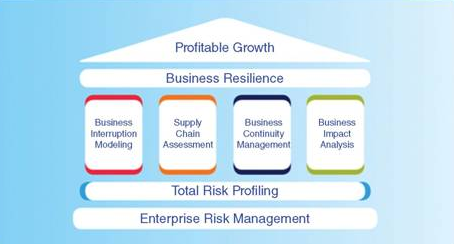Zurich Insurance Group, one of the leading global insurers, emphasizes a proactive, structured, and integrated approach to risk management. Their strategy reflects a commitment to maintaining resilience across complex environments, safeguarding both operations and customers against emerging risks such as climate threats, market volatility, and cyber risks. Below is an overview of Zurich’s core risk management principles and practices.
1. Holistic Risk Framework and Governance
Zurich’s risk management framework is built upon core governance principles—fairness, transparency, and accountability. These values are embedded across their global operations to ensure all business practices align with clear standards and responsibilities. Risk management is overseen by the executive leadership team and is closely integrated into the company’s operational and strategic decision-making processes.
The company employs the Total Risk Profiling™ (TRP) process, a key tool to assess and mitigate risks systematically. Through TRP, Zurich conducts comprehensive reviews of both internal and external risks, identifying potential challenges ranging from financial risks to market disruptions and geopolitical instability. These assessments help Zurich monitor emerging trends and adjust strategies proactively.
2. Risk Appetite and Tolerance Levels
Zurich maintains predefined risk tolerance levels to ensure they only take risks within acceptable boundaries. Their risk appetite is tailored to align with regulatory requirements, customer interests, and long-term shareholder value. The Swiss Solvency Test (SST) plays a pivotal role in guiding Zurich’s capital adequacy to manage risks effectively. The company’s main risk categories include:
- Market Risk: Fluctuations in financial markets and investments.
- Premium and Reserve Risk: Uncertainties related to pricing and claims reserves.
- Natural Catastrophe Risk: Losses due to events like floods and wildfires.
By managing these exposures with precision, Zurich balances profitability with the safety of its clients and the broader business ecosystem.
3. Climate Resilience and Sustainability
As climate risks grow more severe, Zurich integrates sustainability into its risk strategy through Zurich Resilience Solutions. The company helps clients adapt to climate-related challenges by embedding environmental, social, and governance (ESG) considerations into all areas of operation. They leverage the Task Force on Climate-Related Financial Disclosures (TCFD) framework to assess climate-related financial risks and ensure business continuity even under extreme environmental conditions.
Zurich emphasizes resilience not only for vulnerable locations but also throughout the value chain. This means working with internal and external stakeholders to collect data, assess exposures, and implement climate adaptation strategies. Ensuring that regulatory compliance and ESG reporting are aligned with these goals is a key aspect of Zurich’s sustainability commitment.
4. Customer-Focused Risk Solutions
At the heart of Zurich’s strategy is a customer-centric approach that combines innovation with simplicity. Their Strategic Account Management (SAM) program focuses on building long-term partnerships with key customers, ensuring that solutions meet evolving client needs. Through regular feedback loops, Zurich continuously refines its risk management practices to align with customer priorities and changing industry dynamics.
Customer surveys, advisory boards, and high-level executive involvement contribute to Zurich’s customer risk solutions. The company also hosts thought-leadership events, like the Global Risk Management Summit, to foster discussions on future risks and best practices with key clients and industry leaders.
5. Data-Driven Decision Making and Cyber Risk Management
Zurich uses sophisticated data analytics to strengthen its risk management capabilities. Collecting and analyzing data on everything from market conditions to operational vulnerabilities enables better forecasting and mitigation. In a digital-first world, Zurich places significant emphasis on information security and cyber resilience, recognizing that these risks are increasingly interconnected with business operations.
Cyber risk assessments are updated regularly, with teams ensuring compliance with the latest data privacy regulations. Zurich also focuses on building adaptive responses to potential cyber threats, helping customers navigate disruptions while ensuring their own operations remain robust.
6. Monitoring and Continuous Improvement
Zurich’s risk management framework emphasizes ongoing monitoring and adaptation. The company reviews risk status and strategic actions quarterly to ensure that responses remain effective. It also uses key performance indicators (KPIs) to track the success of its risk programs, with customer feedback playing a crucial role in driving continuous improvements.
Zurich’s ability to adapt and refine its approach in real time—while staying aligned with evolving regulatory environments and stakeholder expectations—has made it a leader in the global insurance market.
Conclusion
Zurich Insurance’s risk management principles are rooted in discipline, transparency, and a forward-looking strategy. By balancing risk appetite with sustainable practices, Zurich ensures operational stability and long-term value creation. Its integrated framework, which addresses market, climate, and cyber risks, sets a benchmark for resilience and adaptability in today’s dynamic environment.
Through initiatives like Total Risk Profiling™, Zurich Resilience Solutions, and the Strategic Account Management program, the company continues to demonstrate leadership in risk management. These principles enable Zurich to respond effectively to both current and emerging risks, providing robust protection to its customers and sustaining shareholder value.








